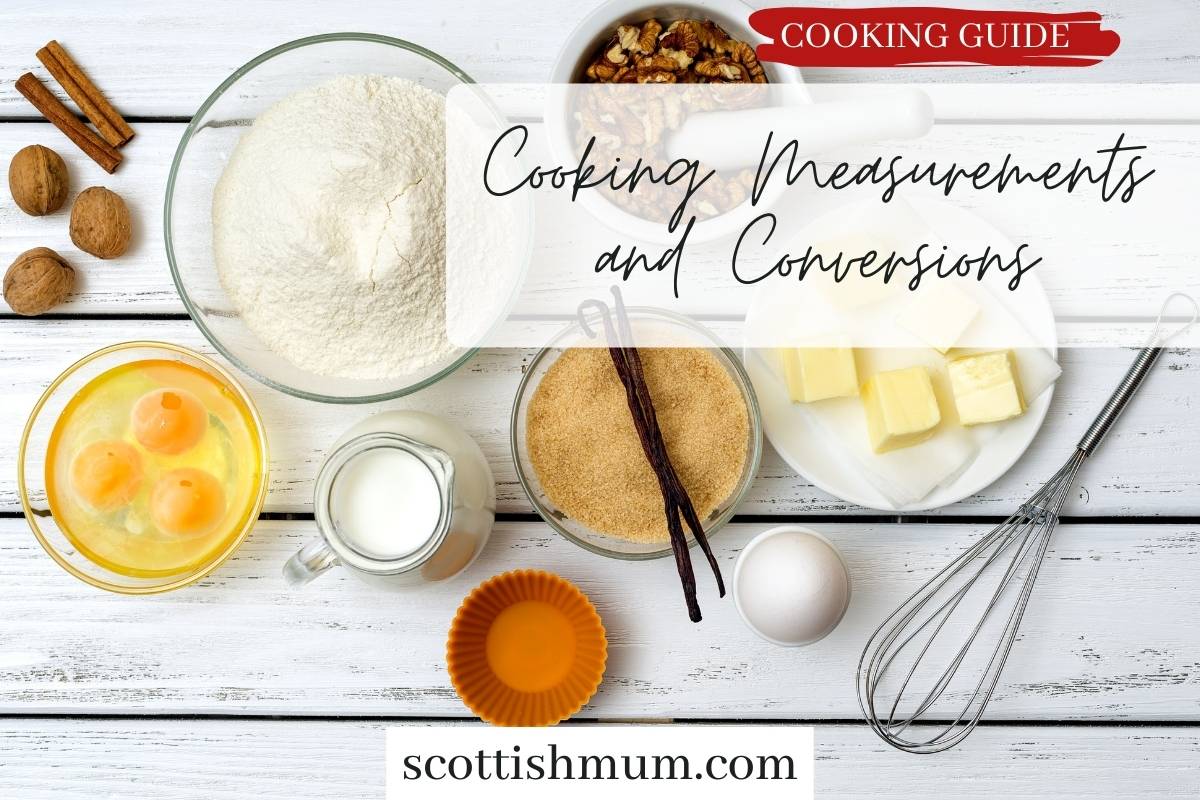
When we measure ingredients, it’s important that for some dishes, the measures are precise. For us in the UK, it’s fairly simple. We use scales for pretty much everything. I don’t think I even own anything that measures in cups, apart from an old glass jug that has liquid cups on the side.

Saying that, I don’t feel measuring in cups is at all accurate, but I know it’s how most ingredients are laid out in the recipes we use from America.
It’s fairly frustrating for us this side of the pond, as dry ingredients can be both flour and sugar, and their weights are very different. Which is why I really struggle with the inaccurate cup method of measuring for baking especially. I would like to try a few American recipes, but I’m not at all confident, so I try to convert them to more familiar grams and ounces.
Using conversion charts can also be quite tricky. They don’t explain the difference in volume of sugar and flour, so we can get really mixed up.
I’ve made a free kitchen conversion chart for you, to help with the difficulties in interpreting recipes from metric to imperial, US to UK.
Free Kitchen Conversion Chart

Measurement Abbreviations for Conversion Charts
Metric
ml = millilitre
l = litre
g = grams
kg = kilogram
C = Celsuis
Imperial
tsp = teaspoon
tbsp = tablespoon
oz = ounce
lb = pound
fl.oz = fluid ounce
F = Fahrenheit
Kitchen Scales
(Affiliate Links are included in this paragraph, both in images and text links)
If you want to buy a kitchen scale to help with measurements, there are loads to choose from. Here’s an image of my favourite Salter scales on Amazon.

Kitchen scales aren’t all equal. Some of more traditional size are dependent on the old UK imperial system, which is rarely used in Europe now. They are more imprecise and won’t allow for liquid volume weights.

If we don’t have scales that help with liquid volume, buying a good quality jug, that has several liquid volumes marked, can be very helpful.

Liquid versus Dry Ingredients
When we measure liquid ingredients, they are measured by volume, or in other words, by the space they take up for measuring. They are heavier and fluid ingredients.
Dry ingredients tend to be dry, and are measured more by weight than liquid volume. While a good set of scales can measure both dry and liquid, a heavier ingredient will like water, will take up less space than a dry ingredient like flour. For baking, it is especially important that weights and measures are accurate. Just a few mls too much of fluid can ruin a great pastry, and a few extra grammes of flour can totally throw a light cake into an unappetising mess.
While in the US, many ingredients are weighed out by using cups or jugs, neither measurement is totally accurate. Measurements by kitchen scales are more accurate, and are easier to manage.

